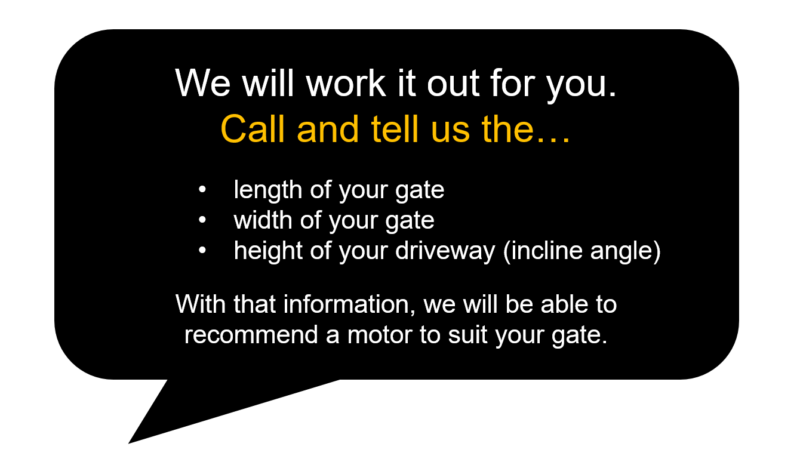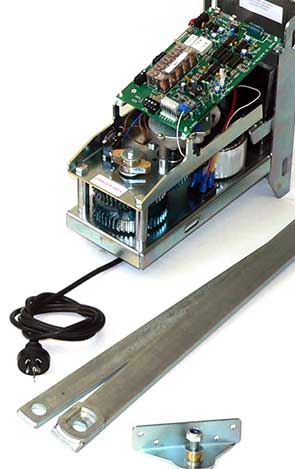You are about to invest in an automatic gate operator. You want to ensure that it lasts as long as the manufacturer designed it to. A gate operator’s motor rating is based on the maximum it can push or swing in ideal conditions. Ideal conditions include features like perfectly flat ground for sliding gates and a perpendicular gate post with quality hinges for a swing gate.
There are differences between swing gates and sliding gates where Virtual Gate Weight (VGW) is concerned. Many factors contribute to an increase in the VGW or your gate. Below we list things to be aware of when selecting a gate operator to open and close your gate. The following dot-points are some features to consider when choosing your initial gate design and preparing for real-world-maintenance over time. Things to consider regarding your gate’s VGW:
SWING GATES:
- CLAD GATE:
Solid surface causing a wind-sail-like effect. A ‘clad’ gate (one solid piece or completely covered by strips of aluminium, timber or other materials) increases the force that your gate operator has to resist when swinging your gate. If you think of a typical farm gate (click to view an example), it offers very little wind resistance, whereas a clad gate (click here for an example) is going to have a significantly greater VGW. - TIMBER GATES – Unsealed:
Timber palings and superstructure can absorb water and increase your gate’s weight. - HINGES:
Tired hinges, sagging hinges, misaligned or rusty hinges or hinges that should have lubrication but they’ve leaked… All faulty hinges can lead to making your gate operator working harder than necessary. Hinges need attention at the time of gate operator installation and during the life-cycle of your gate. - GATE WIDTH:
If a gate is partially clad and particularly wide, the greater the surface area, the greater the wind/air resistance. Also, wide (or ‘long’) gates will be heavier than narrow (or ‘short’) gates. The additional weight means your wide gate will have greater momentum which can strain both hinges and gate operator. If you have a very wide single gate, perhaps changing to 2 single gate leaves that meet in the middle would be a wise decision. - SPEED:
The quicker a gate needs to move, the more force your gate operator must be able to deliver. - HINGE SELECTION:
Tapered bearing hinges at the bottom of the gate + a ball bearing top hinge are an excellent solution for heavy gates. For lighter gates, pintle or gudgeon hinges will do the job. We recommend you avoid welded butt hinges.
SLIDING GATES:
- FAST or SLOW:
The speed you require from your gate operator dictates the force required of your gate operator. How fast do you need your gate to open? - UPHILL OPERATION:
The greater the incline, the heavier your VGW is. - STYLE OF GATE:
A simple sliding gate operator is fairly simple to initiate movement. Cantilever & Telescopic gates require greater force to start. - TIMBER GATES – Unsealed:
Timber palings and superstructure can absorb water and increase your gate’s weight.
- OLD HARDWARE:
If your track is uneven, the wheels damaged, the rack broken or there is obstruction or drag due to aging hardware, the VGW is increased. - INSTALLATION:
If you don’t line the track pieces up correctly or the motor’s cog is not aligned perfectly to the rack on the gate, you’ve got increased resistance which means the VGW is increased. Take care during installation to limit the wear and demand on your gate operator.

1300 694 283


